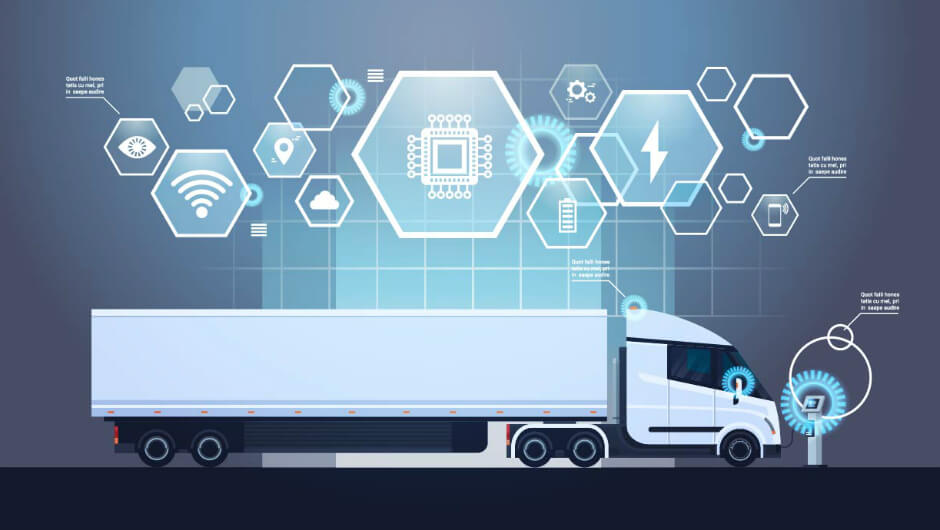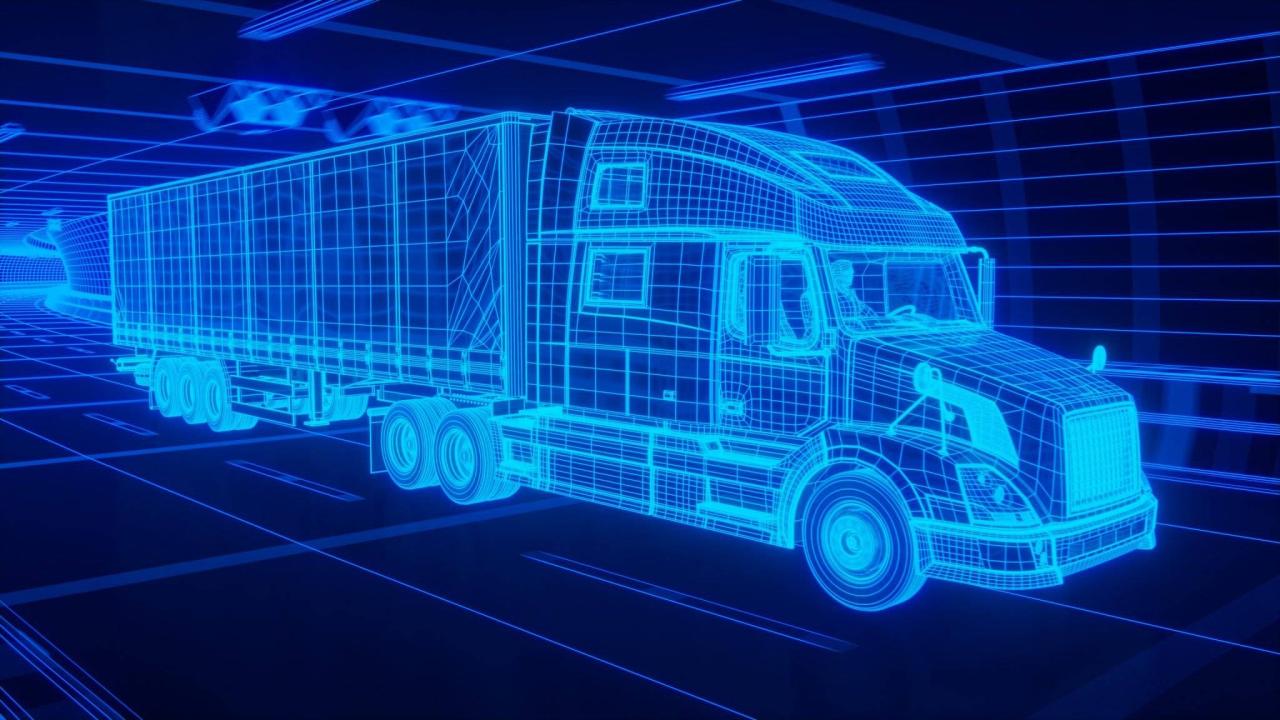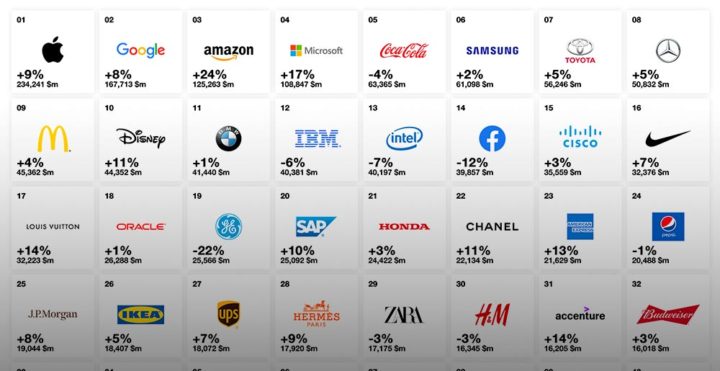Truck Technology: Revolutionizing the Road Ahead
Truck technology has come a long way, evolving from rudimentary designs to the sophisticated vehicles we see on the road today. This journey has been driven by a constant pursuit […]

Truck technology has come a long way, evolving from rudimentary designs to the sophisticated vehicles we see on the road today. This journey has been driven by a constant pursuit of efficiency, safety, and sustainability, transforming the trucking industry and shaping the future of transportation.
From the early days of internal combustion engines to the advent of advanced driver-assistance systems (ADAS) and electric powertrains, truck technology has witnessed remarkable advancements. These innovations have not only enhanced performance and driver comfort but also played a pivotal role in reducing environmental impact and improving road safety.
Evolution of Truck Technology

Trucks have played a vital role in the development of modern society, facilitating the transportation of goods and people across vast distances. From their humble beginnings to the sophisticated vehicles we see today, the evolution of truck technology has been a remarkable journey driven by innovation and the relentless pursuit of efficiency and safety.
Early Truck Designs
The origins of the truck can be traced back to the late 19th century, with the invention of the internal combustion engine. Early trucks were often adapted from horse-drawn carriages, featuring rudimentary engines and limited capabilities.
- One of the earliest examples was the De Dion-Bouton truck, built in 1899, which used a steam engine and had a carrying capacity of 1 ton.
- In 1903, Gottlieb Daimler introduced a gasoline-powered truck, laying the foundation for the modern truck engine.
- Early trucks were often used for hauling goods, construction, and military purposes, with their design constantly evolving to meet the demands of the time.
Engine Development
The evolution of truck technology is closely intertwined with the development of powerful and efficient engines.
- Early engines were often slow and inefficient, but advancements in combustion technology and materials led to the development of more powerful and reliable engines.
- The introduction of diesel engines in the early 20th century marked a significant milestone, offering better fuel economy and higher torque compared to gasoline engines.
- Modern truck engines are marvels of engineering, incorporating technologies like turbocharging, electronic control systems, and variable valve timing to maximize power and efficiency.
Safety Features
As trucks became more powerful and heavier, safety became a paramount concern. Over the years, numerous safety features have been introduced to enhance driver and passenger safety.
- Early trucks lacked basic safety features, but the introduction of brakes, headlights, and turn signals revolutionized road safety.
- In the mid-20th century, safety belts became mandatory, significantly reducing the risk of injuries in accidents.
- Modern trucks are equipped with a wide array of advanced safety systems, including anti-lock brakes (ABS), electronic stability control (ESC), lane departure warning, and blind spot monitoring, contributing to a safer driving environment.
Impact of Technology
Technological advancements have profoundly impacted truck efficiency, performance, and driver experience.
- The introduction of aerodynamic design has significantly improved fuel efficiency, reducing operating costs and environmental impact.
- Automatic transmissions have simplified driving, reducing driver fatigue and improving fuel economy.
- GPS navigation systems have revolutionized route planning, optimizing delivery routes and reducing travel time.
- Telematics systems provide real-time data on vehicle performance, fuel consumption, and driver behavior, allowing for better fleet management and improved safety.
Modern Truck Technology
The trucking industry is constantly evolving, with advancements in technology playing a crucial role in shaping the future of transportation. Modern trucks are equipped with a wide range of innovative features that enhance safety, efficiency, and sustainability.
Advanced Driver-Assistance Systems (ADAS)
ADAS technologies are designed to assist drivers in various aspects of driving, promoting safer and more efficient operations. These systems use sensors, cameras, and software to monitor the vehicle’s surroundings and provide alerts or even take control in critical situations.
- Adaptive Cruise Control (ACC): This system maintains a safe distance from the vehicle ahead by automatically adjusting the truck’s speed. It uses radar or laser sensors to detect the distance and speed of the preceding vehicle and automatically adjusts the truck’s speed to maintain a safe following distance.
- Lane Departure Warning (LDW): LDW uses cameras or sensors to monitor the truck’s position within its lane. If the truck begins to drift out of its lane, the system will issue an audible or visual warning to alert the driver.
- Automatic Emergency Braking (AEB): AEB uses sensors to detect potential collisions and automatically applies the brakes to avoid or mitigate the impact. It can be particularly helpful in situations where the driver may not have enough time to react.
- Blind Spot Monitoring (BSM): BSM uses sensors to detect vehicles in the driver’s blind spots. When a vehicle is detected, the system will issue a visual or audible warning to alert the driver.
- Driver Monitoring Systems: These systems use cameras and sensors to monitor the driver’s alertness and attentiveness. If the driver shows signs of fatigue or distraction, the system will issue an alert to encourage them to take a break.
Truck Engine Technologies
The trucking industry is constantly exploring new engine technologies to improve fuel efficiency, reduce emissions, and enhance performance.
- Diesel Engines: Diesel engines have long been the dominant powertrain in the trucking industry due to their high torque and fuel efficiency. However, they are also known for their higher emissions and noise levels. Advancements in diesel technology, such as selective catalytic reduction (SCR) and diesel particulate filters (DPF), have significantly reduced emissions.
- Electric Engines: Electric trucks offer a zero-emission solution for transportation. They use electric motors powered by batteries, providing quiet operation and reduced environmental impact. However, electric trucks face challenges such as limited range, long charging times, and high upfront costs. Recent advancements in battery technology and charging infrastructure are addressing these challenges.
- Hybrid Engines: Hybrid trucks combine a traditional diesel engine with an electric motor and battery system. This configuration allows for improved fuel efficiency and reduced emissions compared to conventional diesel trucks. Hybrid trucks offer a balance between the benefits of diesel and electric engines, providing a viable alternative for long-haul transportation.
Truck Technology Features
| Feature | Benefits | Drawbacks |
|---|---|---|
| Telematics | Improved fleet management, real-time tracking, optimized routes, reduced fuel consumption, enhanced driver safety | High initial investment, potential privacy concerns, reliance on data connectivity |
| Advanced Safety Systems (ADAS) | Reduced accidents, improved driver alertness, enhanced safety for other road users | Potential for false alarms, high initial cost, reliance on sensor accuracy |
| Electric Engines | Zero emissions, quiet operation, reduced maintenance costs | Limited range, long charging times, high upfront costs, limited charging infrastructure |
| Hybrid Engines | Improved fuel efficiency, reduced emissions, extended range compared to electric trucks | Higher initial cost compared to conventional diesel trucks, potential complexity in maintenance |
Connectivity and Telematics
Telematics, the integration of telecommunications and informatics, has revolutionized the trucking industry by providing real-time data and communication capabilities. It enables fleet managers to optimize operations, enhance safety, and improve overall efficiency.
Fleet Management and Route Optimization
Telematics systems provide valuable insights into truck performance, driver behavior, and cargo status. Fleet managers can monitor vehicle location, fuel consumption, engine diagnostics, and driver activity, allowing them to make informed decisions about maintenance, route planning, and driver training.
- Real-time Tracking: Telematics systems use GPS technology to track the location of trucks in real-time, enabling fleet managers to monitor their movements and optimize routes.
- Fuel Consumption Monitoring: Telematics systems collect data on fuel consumption, identifying areas for improvement and reducing fuel costs.
- Driver Behavior Analysis: Telematics systems can monitor driver behavior, such as speeding, hard braking, and idling, providing insights into driver safety and efficiency.
- Predictive Maintenance: By analyzing engine data and other vehicle sensors, telematics systems can predict potential maintenance issues before they occur, reducing downtime and maintenance costs.
Safety and Efficiency Enhancements
Connected trucks leverage data sharing and communication to enhance safety and efficiency on the road. Telematics systems provide real-time information on traffic conditions, weather forecasts, and road closures, enabling drivers to make informed decisions and avoid potential hazards.
- Collision Avoidance Systems: Telematics systems can integrate with advanced driver-assistance systems (ADAS) to provide collision avoidance warnings, lane departure alerts, and adaptive cruise control.
- Driver Fatigue Monitoring: Telematics systems can monitor driver fatigue levels, alerting managers to potential risks and promoting driver safety.
- Emergency Response: In case of an accident or emergency, telematics systems can automatically send alerts to emergency services, providing critical information about the location and status of the vehicle.
- Improved Communication: Connected trucks enable seamless communication between drivers, fleet managers, and dispatchers, improving coordination and efficiency.
Telematics Solutions and Applications
Various telematics solutions are available for the trucking industry, offering a range of features and functionalities.
- Fleet Management Platforms: These platforms provide comprehensive fleet management capabilities, including vehicle tracking, route optimization, driver performance monitoring, and maintenance scheduling.
- Electronic Logging Devices (ELDs): ELDs automatically record driver hours of service, ensuring compliance with regulations and promoting driver safety.
- Cargo Monitoring Systems: These systems track cargo temperature, humidity, and other parameters, ensuring the safety and quality of goods during transportation.
- Advanced Driver-Assistance Systems (ADAS): ADAS features, such as lane departure warning, blind spot monitoring, and automatic emergency braking, enhance driver safety and reduce the risk of accidents.
Sustainability and Environmental Impact

The trucking industry plays a vital role in global commerce, but its environmental impact is a significant concern. As the industry evolves, reducing its carbon footprint and promoting sustainability are paramount. This section explores the challenges and opportunities in making trucking more environmentally friendly, analyzing the role of emerging technologies and innovations.
Electric Trucks
Electric trucks offer a promising solution for reducing emissions and promoting sustainability in the trucking industry. These vehicles operate on electricity, eliminating tailpipe emissions and reducing noise pollution.
- Reduced Greenhouse Gas Emissions: Electric trucks significantly reduce greenhouse gas emissions compared to their diesel counterparts, contributing to cleaner air and mitigating climate change.
- Improved Air Quality: The absence of tailpipe emissions from electric trucks improves air quality in urban areas, reducing smog and respiratory problems.
- Lower Operating Costs: While initial purchase costs may be higher, electric trucks can offer lower operating costs due to reduced fuel expenses and lower maintenance requirements.
However, challenges remain in widespread adoption, including:
- Limited Range: The range of electric trucks is currently limited compared to diesel trucks, requiring more frequent charging and potentially impacting long-haul operations.
- Charging Infrastructure: A robust charging infrastructure is essential for widespread adoption of electric trucks. Expanding charging networks and ensuring access to reliable charging stations is crucial.
- High Initial Cost: The upfront cost of electric trucks is currently higher than diesel trucks, which can be a barrier for some fleet operators.
Alternative Fuels
Alternative fuels like biodiesel, ethanol, and natural gas offer alternative solutions for reducing emissions and improving fuel efficiency.
- Biodiesel: Biodiesel is a renewable fuel made from vegetable oils or animal fats. It can be blended with diesel fuel, reducing greenhouse gas emissions and improving air quality.
- Ethanol: Ethanol is a biofuel produced from corn or other plant materials. It can be blended with gasoline to reduce greenhouse gas emissions and improve fuel economy.
- Natural Gas: Natural gas is a cleaner-burning fuel than diesel, producing lower greenhouse gas emissions and improving air quality. It can be used in both conventional and heavy-duty trucks.
While these fuels offer potential benefits, challenges remain in their widespread adoption, including:
- Fuel Availability: The availability of alternative fuels can be limited in certain regions, making it difficult for truck operators to access them consistently.
- Infrastructure Costs: Investing in infrastructure for alternative fuels, such as fueling stations and distribution networks, can be costly.
- Performance and Cost: Some alternative fuels may have lower performance characteristics than diesel, and their cost can be higher.
Fuel-Efficient Technologies
Technological advancements in truck design and engine efficiency can significantly improve fuel economy and reduce emissions.
- Aerodynamics: Optimizing truck aerodynamics, such as using trailer skirts and underbody fairings, can reduce drag and improve fuel efficiency.
- Engine Efficiency: Advanced engine technologies, including turbocharging and variable valve timing, can improve fuel economy and reduce emissions.
- Tire Technology: Low-rolling-resistance tires can reduce friction and improve fuel efficiency.
These technologies can be implemented in both new and existing trucks, offering a cost-effective way to reduce fuel consumption and environmental impact.
Impact of Truck Technology on Carbon Emissions
Truck technology has a direct impact on carbon emissions, which are a major contributor to climate change.
- Electric Trucks: Electric trucks eliminate tailpipe emissions, significantly reducing carbon dioxide emissions.
- Alternative Fuels: Alternative fuels, such as biodiesel and ethanol, can reduce carbon emissions compared to diesel fuel, depending on the production methods and feedstocks used.
- Fuel-Efficient Technologies: Improved engine efficiency and aerodynamic design can reduce fuel consumption, leading to lower carbon emissions.
The adoption of these technologies is crucial for reducing the trucking industry’s carbon footprint and mitigating climate change.
Impact of Truck Technology on Air Quality
Truck technology also plays a significant role in improving air quality, particularly in urban areas.
- Electric Trucks: Electric trucks eliminate tailpipe emissions, reducing pollutants like nitrogen oxides (NOx) and particulate matter (PM), which contribute to smog and respiratory problems.
- Alternative Fuels: Alternative fuels, such as natural gas, can reduce emissions of NOx and PM compared to diesel fuel.
- Fuel-Efficient Technologies: Fuel-efficient technologies can reduce emissions of NOx and PM by optimizing engine performance and reducing fuel consumption.
These technologies contribute to cleaner air and improved public health.
Impact of Truck Technology on Fuel Consumption
Advances in truck technology have led to significant improvements in fuel economy, reducing fuel consumption and operating costs.
- Aerodynamics: Optimizing truck aerodynamics can reduce drag and improve fuel efficiency by up to 10%.
- Engine Efficiency: Advanced engine technologies can improve fuel economy by up to 15%.
- Tire Technology: Low-rolling-resistance tires can improve fuel economy by up to 3%.
These technologies contribute to lower fuel costs for truck operators and reduce the overall environmental impact of the trucking industry.
Future of Truck Technology
The trucking industry is on the cusp of a transformative era, driven by rapid advancements in technology. From autonomous driving to artificial intelligence and sustainable solutions, the future of truck technology promises to revolutionize the way goods are transported.
Autonomous Driving
Autonomous driving is poised to significantly impact the trucking industry. Self-driving trucks have the potential to enhance safety, efficiency, and productivity.
- Reduced Accidents: Autonomous trucks can operate with enhanced precision and reaction times, potentially leading to a significant reduction in accidents caused by human error. For example, a study by the National Highway Traffic Safety Administration (NHTSA) found that 94% of crashes involve human error.
- Increased Efficiency: Autonomous trucks can operate 24/7 without the need for breaks or rest stops, maximizing uptime and improving delivery schedules. They can also optimize routes and fuel consumption, leading to significant cost savings.
- Improved Driver Experience: While autonomous trucks may replace human drivers for long-haul trucking, they can also create new opportunities for drivers in areas such as supervision, maintenance, and specialized tasks.
Artificial Intelligence
Artificial intelligence (AI) is transforming various industries, and the trucking sector is no exception. AI applications can enhance truck operations, optimize logistics, and improve driver safety.
- Predictive Maintenance: AI algorithms can analyze sensor data from trucks to predict potential maintenance issues before they occur, minimizing downtime and reducing repair costs. For instance, AI can analyze engine vibration patterns to identify potential engine failures before they happen.
- Route Optimization: AI-powered systems can optimize routes based on real-time traffic conditions, weather, and other factors, ensuring faster and more efficient deliveries. For example, AI can analyze historical traffic data to predict congestion and suggest alternative routes.
- Driver Assistance: AI-based systems can provide drivers with real-time assistance, such as lane departure warnings, blind spot detection, and adaptive cruise control, enhancing safety and reducing driver fatigue.
Emerging Technologies
Beyond autonomous driving and AI, other emerging technologies are shaping the future of truck technology.
- Electric Trucks: Electric trucks are gaining traction as a sustainable alternative to diesel-powered vehicles. They offer zero tailpipe emissions and reduced operating costs, contributing to a cleaner and more environmentally friendly transportation sector.
- Hydrogen Fuel Cells: Hydrogen fuel cell technology offers another promising option for sustainable trucking. Fuel cells convert hydrogen into electricity, providing long-range capabilities with zero emissions. This technology is still under development, but it holds significant potential for the future.
- Advanced Materials: Advancements in materials science are leading to lighter and more durable truck components, improving fuel efficiency and reducing overall weight. For example, the use of carbon fiber composites in truck bodies can reduce weight significantly.
Final Conclusion
As we look ahead, the future of truck technology promises even more exciting developments. The integration of autonomous driving, artificial intelligence, and connectivity will revolutionize the trucking industry, creating a more efficient, safer, and sustainable transportation ecosystem. The road ahead is paved with innovation, and truck technology is at the forefront of this transformative journey.
Truck technology is constantly evolving, with advancements in engine efficiency, safety features, and even climate control. For those operating in extreme environments, sub-zero technology becomes essential. Sub-zero technology helps ensure optimal performance and reliability in frigid conditions, allowing trucks to navigate icy roads and harsh winters with greater ease.
This technology is crucial for keeping the trucking industry moving, even when the temperature plummets.







